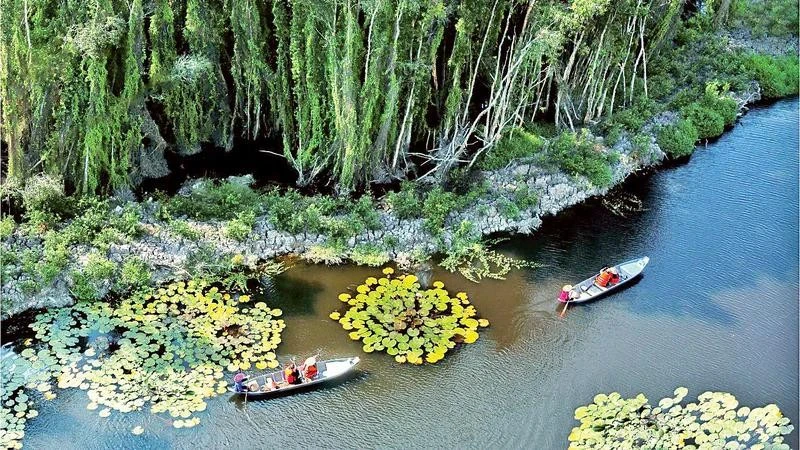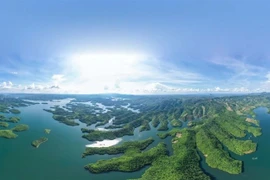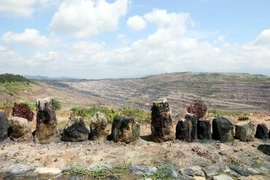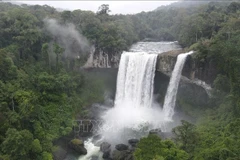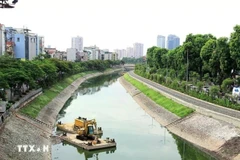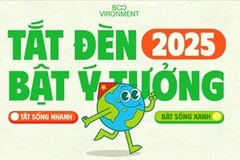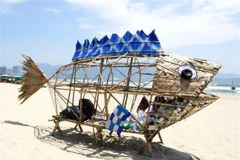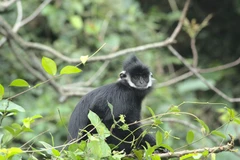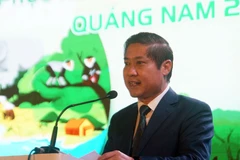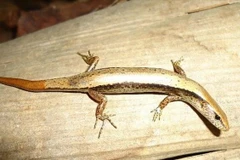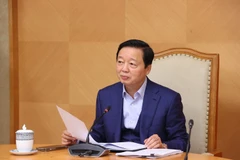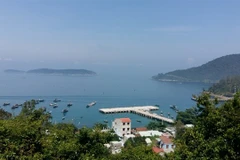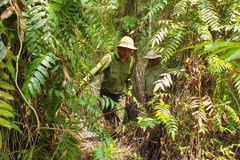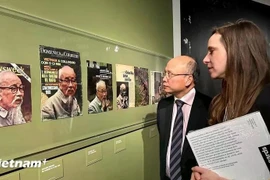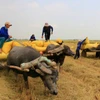Hanoi (VNA) – In recent years, several regions in Vietnam have tapped into the significant potential of sustainable forest ecotourism, a sector that not only boosts local incomes but also plays a key role in preserving forest ecosystems.
Ecotourism offers immersive experiences in nature while supporting conservation efforts, creating a win-win scenario for both the economy and the environment.
A unique opportunity to experience nature
Forest ecotourism stands out from traditional tourism by providing a direct and meaningful connection to nature. Visitors are invited to engage in activities like hiking, kayaking, mountain climbing, cave exploration, and camping, all of which offer them the chance to experience nature first-hand. These activities raise awareness of environmental protection and encourage visitors to adopt a more responsible attitude towards forest conservation.
Among the country's prime ecotourism destinations is Ba Be National Park in the northern mountainous province of Bac Kan. Covering nearly 10,000 hectares, the park is home to stunning landscapes like Ba Be Lake, Dau Dang Waterfall, and Puong Cave, attracting thousands of tourists each year. Similarly, Ba Vi National Park, with its rich history, pleasant climate, and diverse flora and fauna, has become a popular spot for young travellers seeking nature and adventure.
In central Nghe An province, Pu Mat National Park has also emerged as a major destination for ecotourism, with local businesses offering various forest-based tourism services. These initiatives have created employment opportunities for hundreds of local people. Additionally, Con Cuong, a district within the park's reach, is increasingly recognised not only for its natural beauty but also for the unique culture of its indigenous communities.
Another standout ecotourism destination is Pu Luong Nature Reserve in Thanh Hoa, which spans nearly 17,000 hectares. The reserve draws thousands of visitors each year, and north-central Thanh Hoa province has implemented a strategic plan to further develop sustainable tourism in the area. The aim is to attract 27,000 visitors by 2030, which would not only boost the local economy but also ensure the long-term protection of the region’s unique biodiversity.
Similarly, Cuc Phuong National Park in the northern province of Ninh Binh has crafted a diverse range of experiences for tourists. These include educational programs about environmental conservation and cultural exchanges with local ethnic groups. This approach not only offers visitors unique experiences but also raises awareness of the vital importance of preserving nature.
Several national parks, including Cuc Phuong, Phu Quoc, Cat Tien, and Ba Be, have established themselves as leading ecotourism destinations, drawing both domestic and international visitors. These success stories demonstrate the growing role of ecotourism in driving local economies while also protecting Vietnam's rich natural heritage.
Promoting sustainable tourism development
The potential of forest ecotourism to support economic growth while preserving natural resources is immense. One such initiative, the "National Park Passport," seeks to further promote ecotourism by encouraging visitors to explore the diverse value of forest ecosystems. This programme aims to create sustainable financial models for national parks and nature reserves while raising awareness about conservation.
In its first phase, the Ministry of Agriculture and Rural Development will introduce the "National Park Passport" in 34 national parks that already have tourism activities in place. Available in both paper and digital formats, this initiative aims to increase visitor numbers, enhance the ecotourism experience, and improve the infrastructure of these protected areas.
While the government has introduced favourable policies and initiatives to support ecotourism, investment in the sector remains relatively low. Coordination between local authorities and businesses is often fragmented, and many regions develop tourism in an uncoordinated manner. To fully unlock the potential of ecotourism, there is a need for stronger collaboration between authorities, local communities, and businesses. This will help ensure that the sector grows in a sustainable and environmentally responsible manner.
On February 29, 2024, the Prime Minister approved a comprehensive plan to maximise the multi-use value of Vietnam’s forest ecosystems by 2030, with a vision to 2050. This strategy aims to increase revenue from ecotourism, community tourism, and sustainable recreation by 50% by 2030, and to double it by 2050. This long-term vision signals a clear commitment to making forest ecotourism a core part of Vietnam's tourism industry, benefiting both the economy and the environment./.
